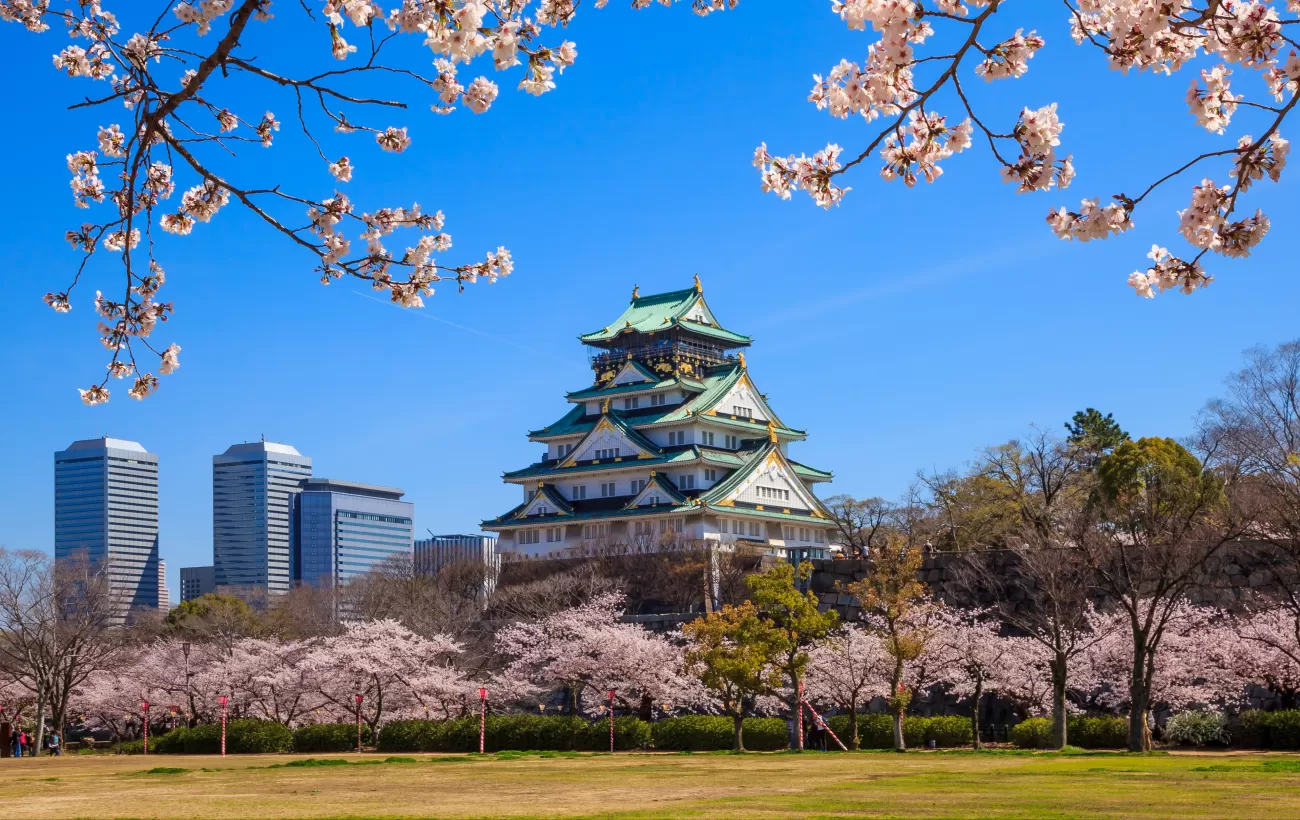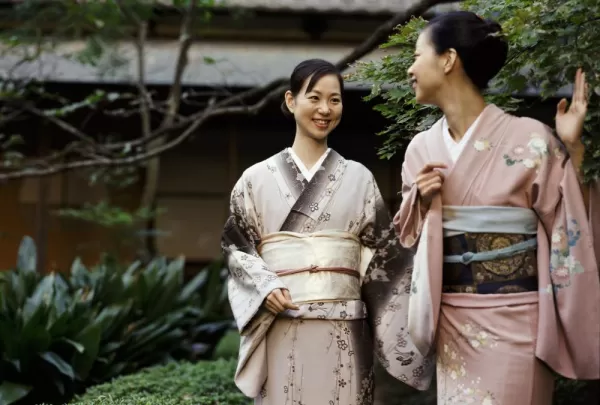em>Your Captain and Expedition Team may make changes to the daily schedule when necessary to maximize the guest experience. Below are the highlight destinations of your voyage.
Kozushima Island
Kozushima is a volcanic island formed from a cluster of lava domes in the Philippine Sea. Inhabited since Japan’s earliest historical era of the Jomon Period, archaeologists have discovered stone tools thousands of years old hewn from obsidian. Myths and legends abound as Kozushima is said to be where ‘Gods gather’ to allocate water resources and the sharing of this precious resource. There is time for snorkeling, diving, and kayaking as well as a hike to Mt Tnejyo, the island’s tallest peak. Later, we visit an open-air Onsen, or hot spring, in a natural rock pool setting, to participate in a longheld bathing pastime amongst Japanese that is steeped in traditions and customs.
Kii Oshima
Kii Oshima’s diverse geography dates back to cooled lava dating back 14m years ago, along with sandstone, mudstone, magma and a lava coastline eroded by wind and waves over millennia. The first arrival of American ships which opened trade negotiations between the US and Japan in 1791 is commemorated in the Japan-US Friendship Museum.
Tokushima
The Iya Valley is a remote, mountainous valley with dramatic steep-sided mountain slopes strung with suspension bridges constructed from mountain vines known as kazurabashi. These vine bridges were once the only means for moving people and goods through the challenging terrain with the Wild Monkey Bridge open to visitors who can pull themselves across the river in a wooden cart suspended on a rope. We take a sightseeing boat cruise through the Oboke Gorge, admire artworks and artefacts at the Otsuka Museum of Art, visit a Buddhist temple and experience an Awa Dance performance, which is celebrated annually at a festival dedicated to this dance style.
Shodoshima
One of the first islands born to the Gods in the creation myth of Japan, Shodoshima literally means ‘small bean island’, a fitting name for an island where traditionally soybean crops were processed into soy sauce, though its better known more recently for its olive plantations. Learn about this time-honored condiment with a 400-year-old history at the Marukin Soy Sauce Historical Museum. Experience the challenge of ‘capturing’ famous ‘Flowing Japanese Bamboo Noodles and visit Misaki no Bunyojyo, the elementary school featured in the famous movie Twenty Four Eyes.
Osaki Shimojima
The portside town of Mitarai developed as a domestic sea trading port during the Edo Period when Japan was isolated from the rest of the world for over two hundred years from the mid-1600s. During this time Japanese sea traders were ordered to maintain vessels in a weakened state to prevent them from straying outside domestic waters and preserving trade. The remnants of these prosperous times can still be seen today on the waterfront and in the narrow laneways and architecture of preserved buildings. Wander through the alleys and streets of this quaint town and see Buddhist temples and shrines that date even further back than the Edo Period.
Miyajima
The famed Itsukushima Shrine is one of Japan’s most recognizable symbols with its Shinto Shrine and red torii gate seemingly floating upon the Seto Inland Sea. Itsukushima Shrine is a UNESCO World Heritage Site and a National Treasure. Other important sites are Daisho-in, a temple of Shingon Buddhism and Reikado Hall, located on Mt Misen, the highest peak on Miyajima. Walking paths link Miyajima’s cultural sites and Maple Valley, providing the ideal pace with which to absorb centuries-old customs.
Hiroshima
Forever linked to the WWII tragedy that saw an atomic bomb dropped on the city in 1945, Hiroshima has since been rebuilt while retaining some historical heritage, with the Peace Memorial Park now the city’s most prominent feature. Shukkeien Garden dates as far back as the 1600s with its valleys, mountains, and forests represented in miniature with tea houses amongst the gardens an ideal spot to take time to enjoy the idyllic surroundings.
Matsuyama
High on Mount Katsuyama, Matsuyama Castle is one of Japan’s twelve original castles and stands at the heart of the city of Matsuyama. Constructed in the early 1600s with the three-storied tower added two hundred years later after the original tower collapsed after being struck by lightning. Pilgrims dressed all in white are a frequent site at Ishitji Temple, where an inner temple connects to the main temple grounds via a dimly cave and 200m long tunnel that houses Buddhist statues, carvings, and drawings.
Ainoshima
Ainoshima Island is often referenced in poetry and the island is home to some of the region’s most interesting sites. The Ainoshima Stone Tunnel was built in the 5th century, Megane Iwa is a striking rock formed by lava and erosion rising from the sea while the Hanaguriserock formation is a columnar sheer cliff. The island is popular with birdwatchers as migratory birds nest on Ainoshima.
Tsushima
Roughly halfway between the Japanese mainland and the Korean Peninsula, Tsushima was once a single island before a canal divided the island in two in the 1600’s, then into three islands in the 1900’s with a second canal constructed. Though in reality there are approx. 100 islands that collectively make up Tsushima with its abundance of natural beauty and untouched forests. Birdwatching is a popular pastime, particularly within the Tsushima Wildlife Conservation Center, home to the Tsushima Leopard Cat, an endangered species.
Jeju (South Korea)
Jeju Volcanic Island with its Manjanggual Lava Tubes are regarded as the finest lava tube system of caves anywhere in the world and are recognised by UNESCO as a Global Geopark site for their unique geological features and volcanic landforms. The Jeonbang Falls is Korea’s only waterfall that tumbles directly into the sea, while Seongsan Ilchulbong Peak is a flat-topped crater that rose from the sea over 100,000 years ago. The near-circular crater is popular for its walking trails and elevated position to view the sunrise or sunset
Sasebo Islands
The Maritime Self-Defense Force Sasebo Museum showcases historical naval vessels alongside the Former Sasebo Navy Club which dates back to the late 1800’s. At Mukyudo, an air raid shelter is unique amongst Japan’s countless shelters as it was built by school children in the style of a school. The historical pottery town of Arita is where Japan’s fine porcelain was first produced around 400 years ago. Arita-yaki pottery is now the most highly regarded pottery across all Japan with its ‘secret ingredient’ kaolin the essential mineral required to make fine porcelain. We try our hand at pottery making with an opportunity to make our very own Arita ceramics. Later, we explore some of the 200 or isles of the Sasebo Islands with opportunities to swim, snorkel, dive and kayak, keeping an eye out for the pods of dolphins which frequent these waters
Goto Islands
The 140 or so Goto Islands are best known for Christianity which was a forbidden religion until the late 1870’s when the ban was lifted. Goto Island translates into English as the ‘five island chain’, with Nakadori Island one of the five main islands. With around 50 churches dotted across the prefecture, such as the UNESCO World Heritage-listed Kashiragashima Church with its stone construction, other interesting sites include the Whale Museum and the Stone Monuments of Wakamatsu Island.




















